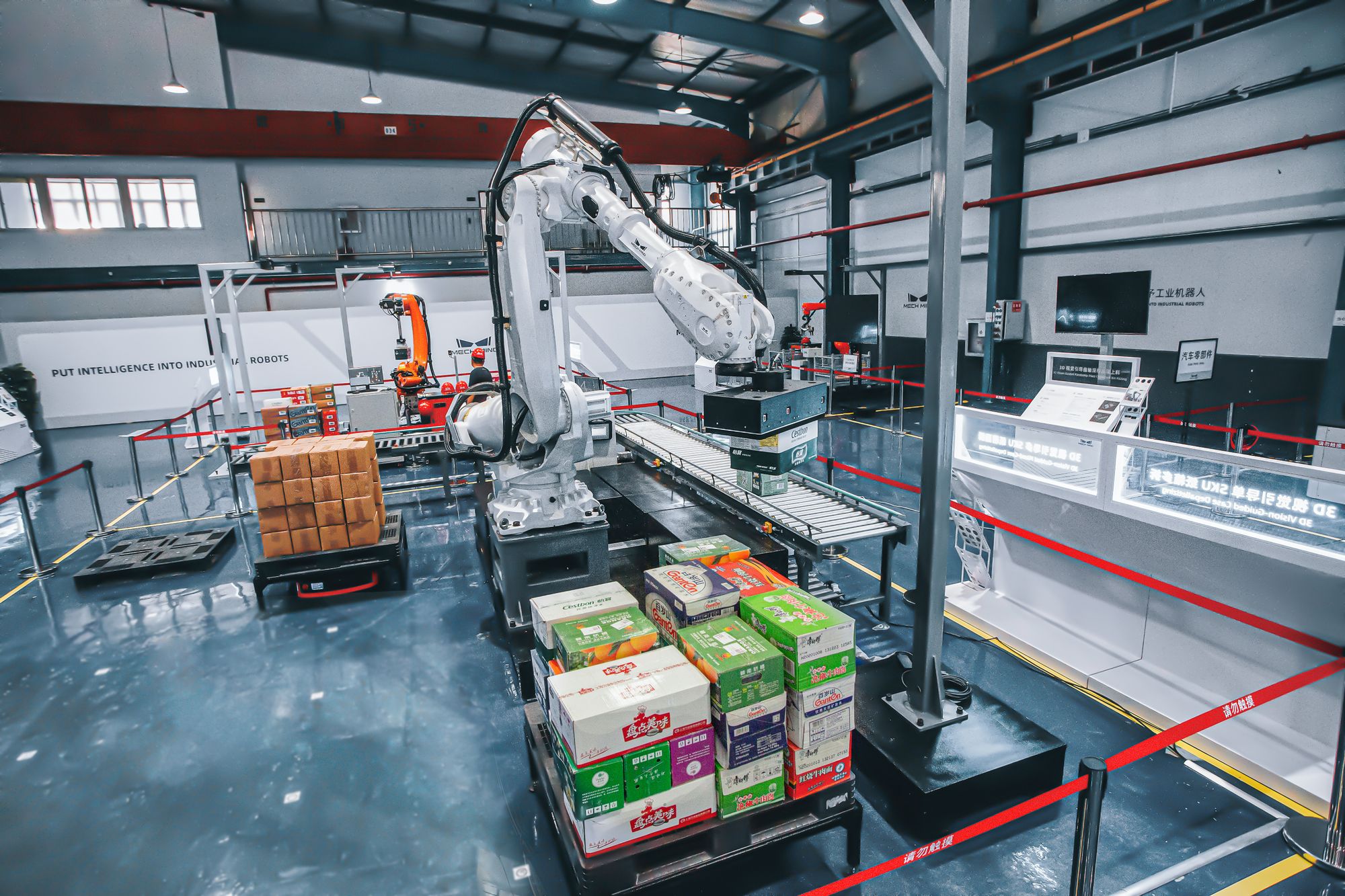Returns management is critical to any retail or e-commerce business, especially in the United States. With the growth of e-commerce, returns have become even more prevalent, with online shoppers returning up to 30% of their purchases, according to research conducted by Optoro.
With such a significant financial impact, businesses need to have a solid returns management strategy. Returns management can be daunting for any business, large or small. It involves various processes, from receiving and processing returns to inspecting and restocking returned items and potentially reselling them.
It also includes managing customer expectations and communication, handling associated financial transactions, and ensuring compliance with legal and ethical guidelines.

Returns management is about handling the process of returning a product and finding a way to make the most out of it. It's like a treasure hunt, where you have to find ways to resell, recycle, or refurbish returned items, and in the process, you can save a lot of money.
Imagine you're on a scavenger hunt, and the goal is to find the best way to handle returns. You're given a map, a compass, and a clue. You have to navigate the maze of policies and procedures, find the hidden gems of data, and uncover the secret strategies that will help you win the game.
So, don't think of returns management as a chore but as an opportunity to sharpen your skills, improve your business, and come out on top.
In this article, we'll guide this exciting journey, sharing the best practices, tips, and tricks to make your returns management strategy successful. Let's get started, and who knows, you might come out on top of the returns management game!
Here’s what we shall cover in this post:
- Understanding Returns Management
- Returns Management Process
- 7 Benefits of Returns Management
- Reducing Return Rates
- Reverse Logistics and Refurbishment
- Factors Involved in Returns Management
- Challenges in Returns Management
- Future Trends in Returns Management
- Conclusion
- Key Takeaways
Understanding Returns Management
Returns management is the process of handling returned products, from receiving and inspecting the item to processing a refund or exchange. It is an essential aspect of any business, as it can impact customer satisfaction and financial performance.
- A transparent and fair returns policy can help set customer expectations and reduce the number of returns. It is crucial to communicate the policy clearly on your website and in packaging or other materials.
- Managing returns in an e-commerce environment can be more complex than in a brick-and-mortar store. Factors such as shipping costs and the return process can play a role in the customer's purchase decision.
- Companies can focus on improving product quality, providing detailed product information, and offering free returns to reduce return rates. Additionally, customer feedback can be used to identify and address issues that lead to returns.
- Returns management can have a direct impact on customer satisfaction. Quick and easy returns can help maintain customer loyalty, while a complex returns process can lead to negative reviews and lost customers.
To ensure the smooth and efficient operation of the returns process, companies should have a dedicated team of customer service representatives to handle returns and provide customer support. Companies should also have a well-defined Returns Policy to ensure customers know the processes and the timelines for returning products.
Returns can also have an impact on the environment. It includes the carbon footprint of shipping products back and forth and the disposal or repurposing of returned products.
Importance of a Returns Policy
A returns policy is a set of guidelines that outlines the process and conditions for customers to return or exchange products. Returns policies are an essential part of any business, as they protect the customer's rights to return the product for a full refund if the product is not satisfactory.
Returns policies also help maintain customer satisfaction and loyalty, as customers know they can return a product if they are not happy with it.
- Having a clear and fair returns policy can help set customer expectations and reduce the number of returns. It should be communicated clearly on the company's website and in packaging or other materials. It can also help customers make informed decisions when purchasing, which can lead to fewer returns.
- A returns policy can also help to manage the costs of returns. It includes shipping, restocking, and lost sales. By outlining the return process and conditions, a company can implement strategies such as charging restocking fees or offering store credit instead of refunds.
- In addition, a returns policy can also help to manage inventory. It includes managing the flow of returned products through the supply chain and dealing with the financial impact of lost sales or the costs of restocking.
- A well-designed returns policy can also help to maintain customer satisfaction. By making the returns process quick and easy, customers are more likely to remain loyal. On the other hand, a complex returns process can lead to negative reviews and lost customers.
It's also important to keep in mind that having a returns policy that complies with legal compliance is essential. It includes consumer protection laws and any regulations related to the handling and disposal of returned products.
Returns Management Process
- Receiving Returns: The first step in the returns management process is receiving customer returns. It can be done through mail, in-store drop-offs, or online portals. It is vital to have a clear and accessible returns policy for customers to follow.
- Inspection and Quality Control: Once the return is received, it is inspected for any damage or defects. It is known as quality control. The product is then checked against the customer's return reason to ensure it meets the requirements for a return.
- Restocking: If the returned item is in good condition, it can be restocked and returned to the shelves for resale. However, if the item is damaged or not in a re-sellable condition, it may need to be sent for refurbishment or disposal.
- Refurbishment: If an item is returned with minor damages, it may be sent for refurbishment. This process includes cleaning, repairing, and testing the product to ensure it is in good working condition. After refurbishment, the item can be restocked and sold again.
- Disposal: If an item is not in a condition to be resold, it may need to be disposed of. It can be done through recycling or sending it to a disposal facility.
- Credit or Refund: After the returned item has been inspected and processed, the customer will either receive a credit or a refund. It is determined by the customer's original payment method and the retailer's returns policy.
- Tracking and Reporting: Throughout the returns management process, it is crucial to track and report on the number of returns, the reasons for returns, and the costs associated with returns. This information can be used to identify trends and improve the returns management process.
- Customer Communication: Keeping customers informed throughout the returns process is essential. It includes sending confirmation of receipt of the return, providing updates on the status of their return, and informing them of the outcome of the return, whether it be a credit or a refund.
- Reverse Logistics: It is also vital to consider reverse logistics, which is the process of managing the return of goods from the customer back to the manufacturer or supplier. It may involve coordinating transportation and managing inventory levels.
Managing Returns in e-Commerce
Managing returns in an e-commerce environment can be more complex than in a brick-and-mortar store. It is because e-commerce returns typically involve shipping the product back to the seller, which can add additional costs and logistical challenges.
- Returns management in e-commerce involves several steps, including creating a return policy, setting up a returns process, and providing customer support.
- The return policy should clearly outline the conditions for returns and the refund process and should be communicated to customers during the purchase process.
- The return process should be streamlined and efficient to reduce costs and include options such as returning items via mail or in-store.
Finally, customer support should be provided to help customers with the returns process, answer any questions, and ensure a smooth experience.
It is crucial to have a clear and efficient process in place to handle returned products.
Clear Return Policy: A clear and easy-to-understand return policy is crucial for managing returns in e-commerce. It should be prominently displayed on your website and in all customer communications.
It helps set customer expectations and reduce the number of returns. A clear policy can also help customers make informed decisions when purchasing, which can lead to fewer returns.
Efficient Process: An efficient and cost-effective process for receiving and processing returns is essential for managing returns in e-commerce. It includes having a dedicated team or system to handle returned products and using appropriate packaging and shipping methods to reduce costs.
It's also important to keep track of the returned items and process the refund or exchange in a timely manner.
Customer Convenience: Providing a prepaid return label can make the process more convenient for the customer, increasing satisfaction and reducing the number of returns. Offering free returns can also increase customer satisfaction and reduce the number of returns.
7 Benefits of Returns Management
1. Reduced Costs
Returns management can reduce costs by implementing strategies such as charging restocking fees or offering store credit instead of refunds. Additionally, by having a clear and efficient process in place, businesses can reduce the costs associated with processing returns, such as shipping and handling.
2. Improved Inventory Management
Returns management can also help improve inventory management by managing the flow of returned products through the supply chain and dealing with the financial impact of lost sales or restocking costs.
By keeping track of returned items, businesses can adjust their purchasing and stocking strategies to reduce excess inventory and improve overall efficiency.
3. Increased Customer Satisfaction
Businesses can increase customer satisfaction by making the returns process quick and easy, leading to repeat customers and positive reviews. On the other hand, a complex returns process can lead to negative reviews and lost customers.
4. Better Product Quality
Returns management can also help businesses identify and address product quality issues. By tracking the reasons for returns, companies can identify and rectify any manufacturing or design defects, leading to better product quality and fewer returns in the future.
5. Legal Compliance
Having a returns policy that complies with legal compliance is essential. It includes consumer protection laws and any regulations related to the handling and disposal of returned products. By adhering to these regulations, businesses can avoid costly fines and legal issues.
6. Competitive Advantage
Returns policies can also be used as a competitive advantage, as many customers consider a company's return policy before making a purchase. A company with a more flexible or lenient return policy can attract more customers than one with a strict policy.
7. Improved Data Analysis
Returns management can also provide valuable data that can be used to improve overall business performance.
By tracking the reasons for returns, businesses can gain insights into customer preferences, buying habits, and product performance, which can be used to make data-driven decisions and improve sales and marketing strategies.
Reducing Return Rates
Return rates refer to the percentage of products that customers return after purchase. Reducing return rates is an important goal for businesses, as it can help them save money and improve customer satisfaction.
Reducing return rates is vital for any business, as returns can be costly and time-consuming to process. By implementing a few key strategies, companies can reduce the number of returns and improve overall efficiency.
Clear and Easy-to-Understand Return Policy: One of the most important strategies for reducing return rates is having a clear and easy-to-understand return policy. It should be prominently displayed on your website and in all customer communications and should include information on how to initiate a return, what items are eligible for a return, and how long customers have to initiate a return.
By setting clear customer expectations, businesses can reduce the number of returns due to confusion or misunderstandings.
Accurate Product Descriptions and Images: Another key strategy for reducing return rates is providing accurate product descriptions and images. It includes detailed information on the product's size, color, and other important features.
By providing accurate information, businesses can reduce the number of returns due to customers receiving a product that is different than what they expected. Additionally, providing high-quality images can help customers get a better idea of what the product looks like, reducing the number of returns due to dissatisfaction with the product's appearance.
Providing Measurement Guides: Many customers return products because they don't fit properly. Businesses can provide measurement guides on their website to reduce the number of returns due to sizing issues.
It can include information on how to measure different parts of the body, as well as size charts that can help customers to determine which size is right for them. By providing this information, businesses can reduce the number of returns due to sizing issues.
Offering Free Returns: Offering free returns is another effective strategy for reducing return rates. By eliminating the cost of returning an item, customers are likelier to initiate a return if they are unsatisfied with a product.
Additionally, by offering free returns, businesses can increase customer satisfaction, leading to repeat customers and positive reviews.
Providing Excellent Customer Service: Providing excellent customer service is another crucial strategy for reducing return rates. By responding quickly to customer inquiries and addressing any issues they may have with a product, businesses can help to prevent returns.
Additionally, by being friendly and helpful, companies can increase customer satisfaction, leading to repeat customers and positive reviews.
Addressing Quality Issues: Another way to reduce return rates is by addressing quality issues. By tracking the reasons for returns, businesses can identify and rectify any manufacturing or design defects, leading to better product quality and fewer returns in the future.
Additionally, by addressing quality issues, businesses can improve customer satisfaction, leading to repeat customers and positive reviews.
Regularly Reviewing and Improving Your Returns Policy: Finally, businesses should regularly review and improve their return policy. It can include analyzing return data to identify trends and areas for improvement and soliciting customer feedback to understand their needs and preferences.
Businesses can reduce return rates over time by continuously improving their return policy.
Costs of Returns
Returns are an inevitable part of doing business, but they can also be costly for companies. Understanding returns' costs can help enterprises to make informed decisions about their returns policies and processes.
1. Shipping Costs
One of the most obvious costs associated with returns is shipping. When a customer returns an item, the business must pay for shipping to get the item back. This cost can add up quickly, particularly for companies that have a high return rate or sell bulky items.
Businesses may also have to pay for shipping to send a replacement item or refund the customer.
2. Restocking Fees
Another cost associated with returns is restocking fees. These fees are charged by businesses to cover the cost of processing a return and getting the item back into inventory.
Restocking fees can vary depending on the item, but they can be a significant expense for businesses. Additionally, restocking fees can also discourage customers from initiating returns, which can lead to customer dissatisfaction.
3. Loss of Sales
Another cost of returns is the loss of sales. When a customer returns an item, the business can no longer sell that item as new. It can result in lost revenue, particularly for companies that sell high-priced items or have a high return rate.
Additionally, businesses may also lose out on the potential for repeat customers or positive reviews if the customer is dissatisfied with the return process.
4. Administrative Costs
Another cost associated with returns is administrative costs. These include the time and resources required to process returns, such as handling customer inquiries, issuing refunds or exchanges, and updating inventory.
Administrative costs can be significant for businesses, particularly those with high return rates or who lack an efficient returns process.
5. Reputation Costs
Finally, returns can also have costs related to a company's reputation. Negative reviews or customer complaints about the return process can damage a business's reputation, leading to lost customers and revenue.
Additionally, a business's reputation can be damaged if it has a high return rate, which can be seen as a sign of poor quality products or customer service.
Reverse Logistics and Refurbishment
Returns management is an important aspect of any business that sells products. One of the key aspects of returns management is reverse logistics and refurbishment. Reverse logistics is managing the return of goods from the customer to the manufacturer or supplier.
At the same time, refurbishment is restoring returned items to a like-new condition. Together, reverse logistics and refurbishment play a critical role in reducing costs and maximizing the value of returned goods.
Reverse Logistics
Reverse logistics involves the management of the return of goods from customers to the manufacturer or supplier. It includes the transportation, storage, and processing of returned goods.
Effective reverse logistics can help minimize return costs, such as shipping and restocking fees. Additionally, reverse logistics can help speed up the refund or exchange process for customers, improving customer satisfaction.
Refurbishment
Refurbishment is the process of restoring returned items to a like-new condition. It can include cleaning, testing, and repairing the item and repackaging it for resale.
Refurbishment can increase the value of returned goods, as they can be resold at a lower cost than new items. Refurbishment can also help reduce the environmental impact of returns, as it keeps usable products out of landfills.
Benefits of Reverse Logistics and Refurbishment
Reverse logistics and refurbishment offer a number of benefits for businesses.
- By managing the return of goods effectively and restoring them to a like-new condition, companies can reduce the costs associated with returns and increase the value of returned goods.
- Effective reverse logistics and refurbishment can also help to improve customer satisfaction by speeding up the refund or exchange process.
Implementing Reverse Logistics and Refurbishment
Implementing effective reverse logistics and refurbishment can be challenging for businesses. It requires the coordination of multiple departments and processes and the investment in transportation, storage, and refurbishment equipment. Additionally, companies must also comply with legal and environmental regulations related to the handling of returned goods.
Managing Returned Inventory
Returned inventory refers to products that have been returned by customers and are no longer available for sale. These items must be appropriately managed to minimize the costs associated with returns and maximize their value.
Identifying Returned Inventory: The first step in managing returned inventory is identifying which items have been returned. This can be done through tracking numbers, barcodes, or other identifying markers. Once items have been identified as returned inventory, they must be properly processed and stored.
Processing Returned Inventory: Processing returned inventory involves inspecting the items to determine their condition and whether they can be resold. Items in good condition can be cleaned, tested, and repackaged for resale.
Items that are damaged or defective may need to be repaired or recycled. Processing returned inventory can increase the value of returned goods and reduce the costs associated with returns.
Storing Returned Inventory: Proper storage of returned inventory is essential to minimize the costs associated with returns. Items should be stored in a clean, dry, and secure location. They should be protected from damage, and inventory levels should be regularly monitored to ensure that items are not stored for too long.
Disposing of Returned Inventory: If an item cannot be resold or repaired, it must be disposed of. Disposing of returned inventory involves identifying the most cost-effective and environmentally-friendly disposal method. This may include recycling, donating to charity, or selling to a liquidator.
Tracking Returned Products
Tracking returned products is an important aspect of managing the returns process. It allows businesses to identify which products are being returned and why which can help to improve the overall customer experience and reduce the costs associated with returns.
Identifying Returned Products: The first step in tracking returned products is identifying which items have been returned. This can be done through tracking numbers, barcodes, or other identifying markers. Once items have been identified as returned products, they must be adequately processed and stored.
Recording Return Data: Recording return data is an essential aspect of tracking returned products. This includes information such as the date of the return, the reason for the return, and the customer's contact information. This data can be used to identify trends in returned products and improve the overall returns process.
Analyzing Return Data: Analyzing return data is an essential part of tracking returned products. Businesses can identify common reasons for returns by analyzing data, such as product defects or poor fit. This information can be used to improve the overall customer experience and reduce the costs associated with returns.
Communicating with Customers: Communicating with customers is an essential aspect of tracking returned products. By reaching out to customers who have returned products, businesses can gather additional information about why the product was returned and how the situation can be resolved. This can improve the overall customer experience and reduce the costs associated with returns.
Reusing and Recycling Returns
Reusing Returns: Reusing returns is one way to reduce the costs associated with managing returned products. This can be done by refurbishing or repairing returned products so they can be sold again. It can reduce the costs associated with returns and increase the value of returned products.
Recycling Returns: Recycling returns is another way to reduce the costs of managing returned products. It can be done by breaking down returned products and recovering materials that can be used again. It can help reduce the environmental impact of the returns process and the costs associated with managing returned products.
Factors Involved in Returns Management
Understanding the factors involved in returns management can help businesses to manage the process better and improve customer satisfaction.
1. Customer Expectations
Understanding customer expectations is one of the essential factors in returns management. Customers expect a seamless returns process, with clear instructions on how to return products and a timely refund or exchange. By understanding customer expectations and exceeding them, businesses can improve customer satisfaction and increase the likelihood of repeat customers.
2. Returns Policy
Another essential factor in returns management is having a clear and easy-to-understand returns policy. A good returns policy should be easy to find on the company's website and should include information on the types of products that can be returned, how long customers have to return products and the process for obtaining a refund or exchange.
3. Logistics
Logistics play a vital role in returns management. It involves the process of receiving, storing, and processing returned products. Businesses should have a system in place for tracking returned products and ensuring that they are handled in a timely and efficient manner. Logistics is also vital for ensuring that products are stored in the right conditions so that they can be resold or recycled.
4. Data Analysis
Data analysis is another critical factor in returns management. Businesses can identify patterns and trends by analyzing data on return rates and reasons for returns. It can help them identify issues with specific products or the returns process and make necessary changes to improve the process.
5. Cost
Cost is another factor to consider in returns management. The cost of returns can have a significant impact on a business's bottom line. Companies can improve their bottom line by understanding the costs associated with returns and implementing strategies to reduce them.
6. Feedback
Feedback is a critical factor in returns management. By gathering customer feedback about their returns experience, businesses can identify areas for improvement and address any issues that customers may have. It can improve the overall customer experience and increase customer satisfaction.
Challenges in Returns Management
Returns management is crucial to running a successful business, but it can also present several challenges. From dealing with the cost of returns to managing the logistics of processing returned products, there are various issues that businesses must navigate to manage returns effectively.
Cost of Returns: One of the biggest challenges of returns management is dealing with the cost of returns. This can include everything from the cost of shipping returned products back to the warehouse to the cost of restocking and reselling returned items. These costs can add up quickly and can have a significant impact on a business's bottom line.
Lack of Data: Another challenge that businesses often face when managing returns is a lack of data. With accurate and detailed information on return rates and reasons for returns, companies can easily identify patterns and trends. This can make it difficult to make informed decisions on improving the returns process.
Managing Returned Inventory: Managing returned inventory is another major challenge of returns management. It can include everything from properly storing returned products to determining which products should be resold and which should be liquidated or recycled. In addition, businesses must also manage the logistics of processing returned products, including receiving, inspecting, and restocking returned items.
Customer Service: Dealing with customer service issues related to returns can also be a challenge. From handling customer complaints to providing accurate and timely information on the status of a return, businesses must navigate various customer service issues to effectively manage returns.
Complex Logistics: The logistics of returns management can be complex, and businesses must navigate various issues related to shipping, receiving, and processing returned products. It can include everything from dealing with carrier delays to managing the logistics of reverse logistics.
Fraud: Fraud is another challenge that businesses must contend with when managing returns. It can include customers returning counterfeit products returning used or damaged items, and claiming they are new.
Keeping up with regulations: Keeping up with regulations and laws related to returns management can be a challenge. Businesses must be aware of the various regulations and laws that apply to their industry and must ensure that they comply to avoid costly penalties or fines.
Future Trends in Returns Management
Returns management is an essential aspect of running a successful business, and it is vital to stay up-to-date with the latest trends to continue improving the process. As technology and consumer behavior continue to evolve, several trends will likely shape the future of returns management.
Increased Use of Artificial Intelligence
Artificial intelligence (AI) is becoming increasingly prevalent in various industries and returns management is no exception. AI-powered chatbots can help to automate customer service interactions, making the returns process more efficient.
In addition, AI algorithms can be used to analyze data on return rates and reasons for returns, which can help businesses to identify patterns and trends.
Advancements in e-Commerce
E-commerce has revolutionized the way that businesses sell products, and it has also had a significant impact on returns management. Online retailers are leveraging technological advancements to improve the returns process, such as using virtual try-on technology and providing customers with more detailed product information.
In addition, more and more retailers are offering free returns to differentiate themselves and increase customer satisfaction.
Greater Emphasis on Sustainability
Sustainability has become an increasingly important issue for consumers, and businesses are responding by incorporating sustainable practices into their operations.
It includes designing products with recyclable materials, implementing closed-loop systems for returning products, and increasing the use of reusable packaging. These all are included in Packaging Management.
Increased use of Reverse Logistics
Reverse logistics has become a critical aspect of returns management. It involves the process of receiving, storing, and processing returned products. Businesses are now increasing their focus on reverse logistics to minimize costs and improve overall efficiency.
Mobile Optimization
Consumers are increasingly using mobile devices to make purchases, and retailers are responding by optimizing the returns process for mobile users. It includes developing mobile-friendly returns portals and mobile notifications to keep customers informed throughout the returns process.
Customized Solutions
Businesses are now increasingly looking for customized solutions to improve their returns process. It includes identifying their business and customers' specific needs and developing solutions tailored to their needs.
Virtual Reality
Virtual reality technology is being increasingly adopted in the retail industry and can also be used to improve the returns process. For example, virtual try-on technology can help customers see how an item will look before they make a purchase, reducing the number of returns.
How Deskera Can Assist You?
Deskera MRP allows you to closely monitor the manufacturing process. From the bill of materials to the production planning features, the solution helps you stay on top of your game and keep your company's competitive edge.

Deskera ERP and MRP system can help you:
- Manage production plans
- Maintain Bill of Materials
- Generate detailed reports
- Create a custom dashboard
Deskera ERP is a comprehensive system that allows you to maintain inventory, manage suppliers, and track supply chain activity in real-time, as well as streamline a variety of other corporate operations.
Deskera Books enables you to manage your accounts and finances more effectively. Maintain sound accounting practices by automating accounting operations such as billing, invoicing, and payment processing.
Deskera CRM is a strong solution that manages your sales and assists you in closing agreements quickly. It not only allows you to do critical duties such as lead generation via email, but it also provides you with a comprehensive view of your sales funnel.
Deskera People is a simple tool for taking control of your human resource management functions. The technology not only speeds up payroll processing but also allows you to manage all other activities such as overtime, benefits, bonuses, training programs, and much more. This is your chance to grow your business, increase earnings, and improve the efficiency of the entire production process.
Conclusion
Returns management is crucial to any business, especially in today's e-commerce landscape. With 30% of online purchases being returned, it's more important than ever for companies to have a strong returns management process.
This process involves various tasks, from receiving and processing returns to inspecting and restocking returned items and potentially reselling them. It also includes managing customer expectations and communication, handling associated financial transactions, and ensuring compliance with legal and ethical guidelines.
However, returns management also comes with its share of challenges. Managing return rates, reverse logistics, and returned inventory can all be complex tasks. Keeping up with legal and ethical guidelines is also essential to ensure compliance.
Despite these challenges, returns management is a necessary aspect of any business, and it is essential to be aware of the best practices, future trends, and challenges in this field.
To stay competitive and make the most out of returns, businesses must be proactive and develop a strategy that works for them. Understanding the importance of returns management and implementing best practices can help companies to minimize costs, increase customer satisfaction and drive revenue.
Key Takeaways
- A strong returns management process includes a variety of tasks, from receiving and processing returns to inspecting and restocking returned items and even potentially reselling them.
- Effective returns management can benefit a business in many ways, such as an increase in customer loyalty and repeat business. Plus, properly managing returned items can lead to cost savings and potential revenue opportunities through reselling or liquidation.
- Developing a clear and fair returns policy is a crucial step in managing customer expectations and reducing the number of returns. Proper tracking and documentation of returned items are vital to ensure they are handled and processed correctly.
- Reverse logistics, moving returned items through the supply chain, is an essential aspect of returns management. Refurbishing returned items can be a cost-effective way to handle returns and minimize losses.
- Reusing and recycling returned items can also be a sustainable way to handle returns.
- Keeping up with the latest trends and best practices in returns management can help businesses stay competitive and make the most out of returns.
Related Articles













